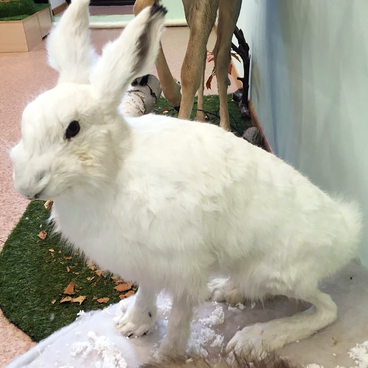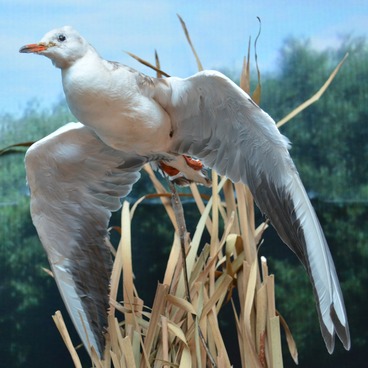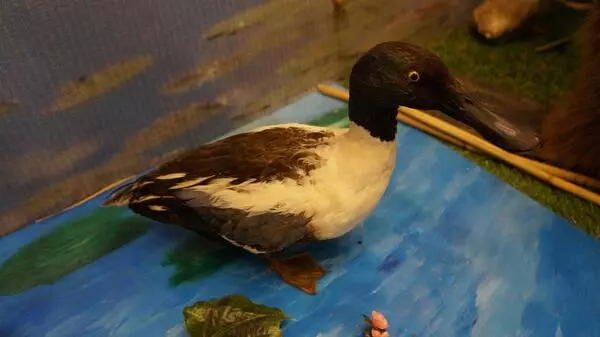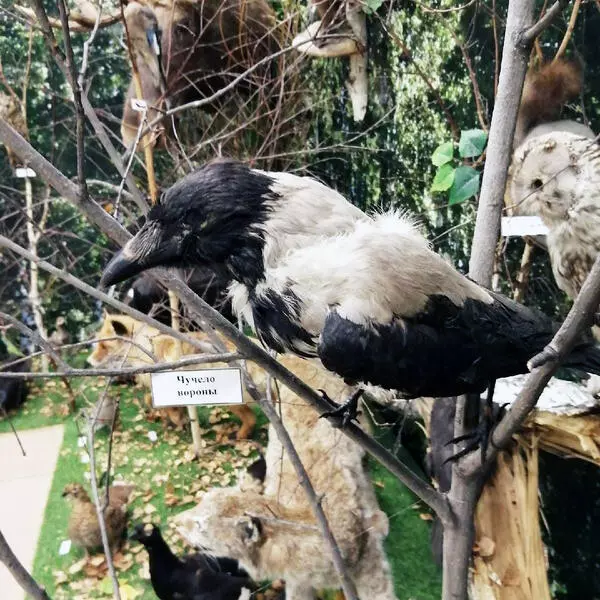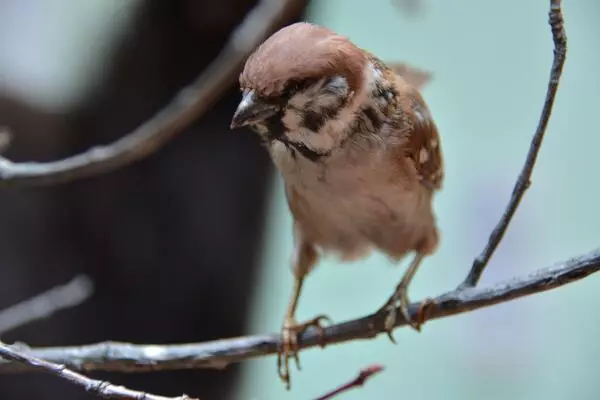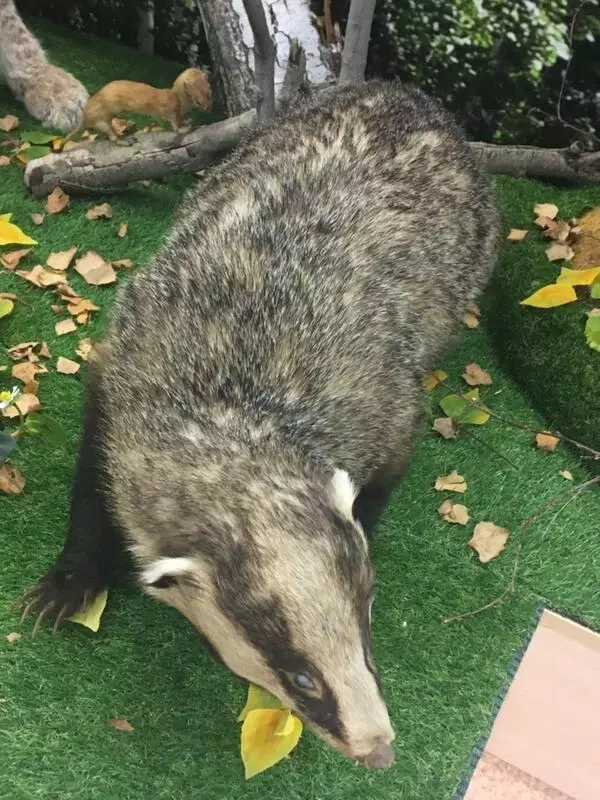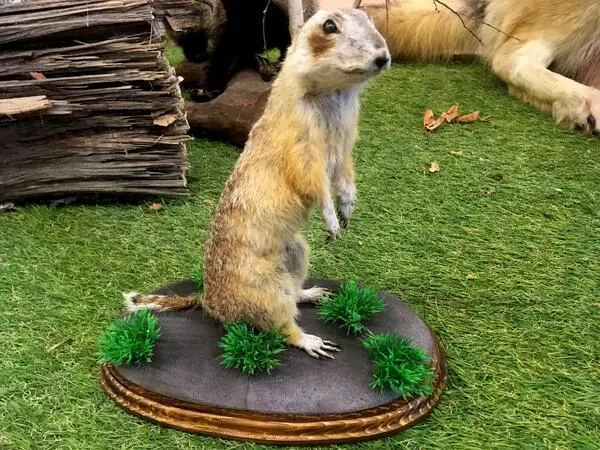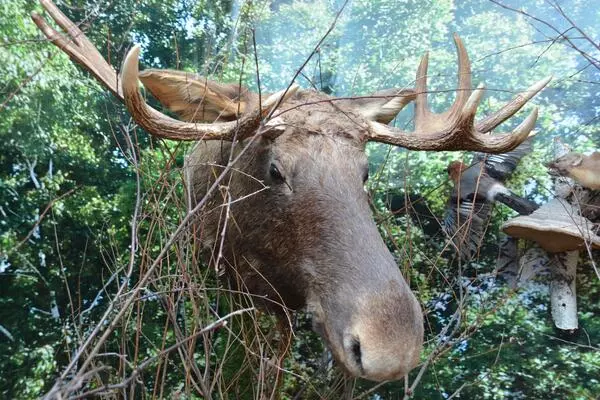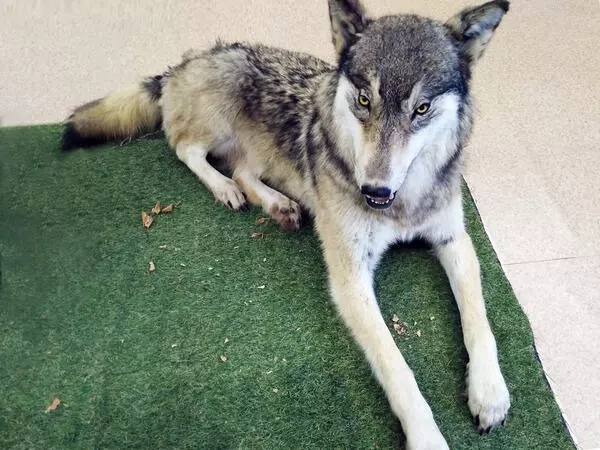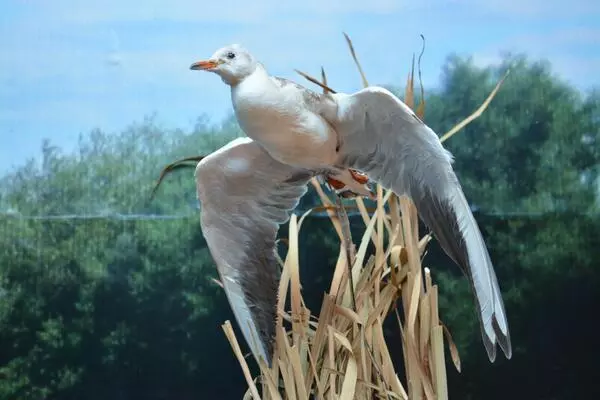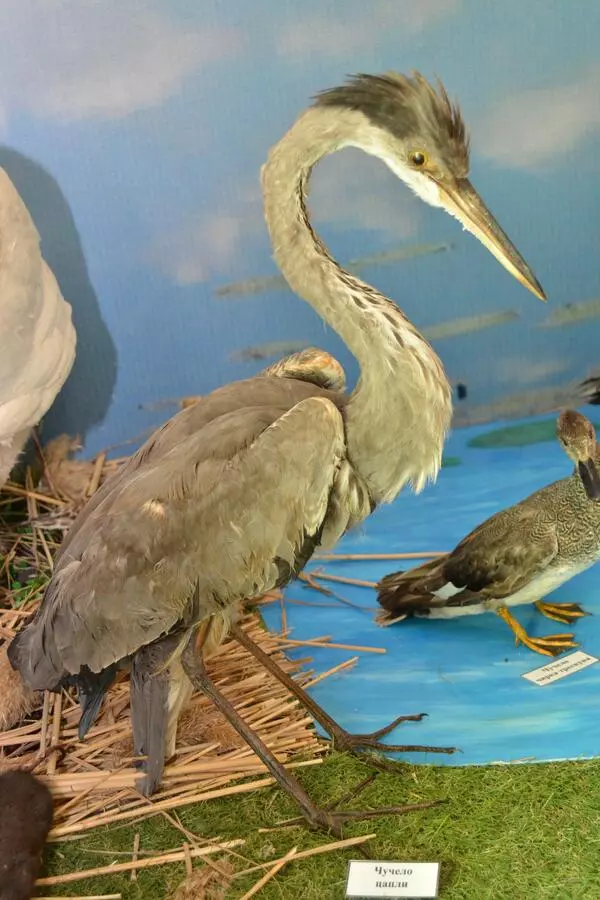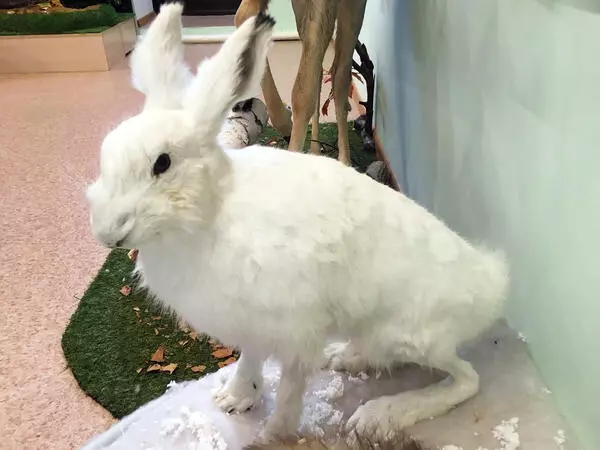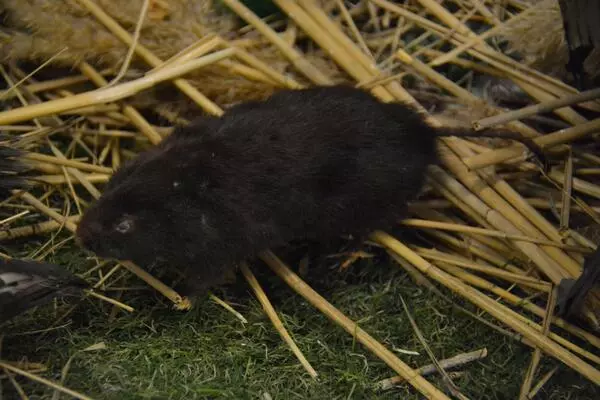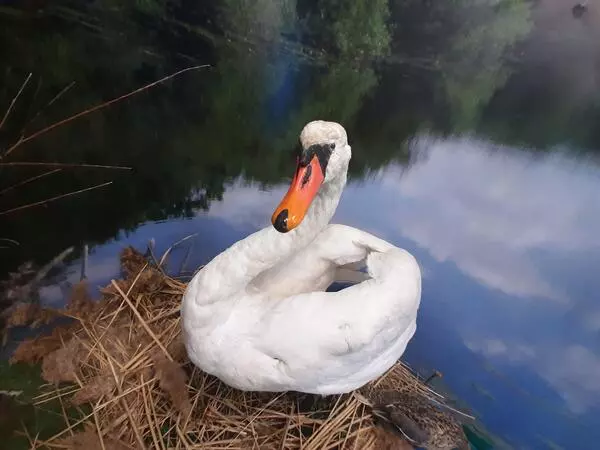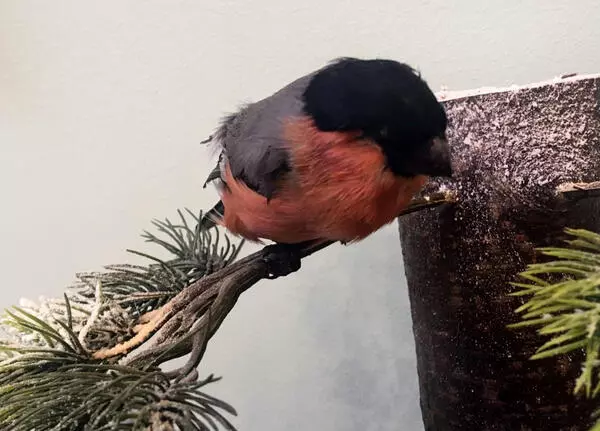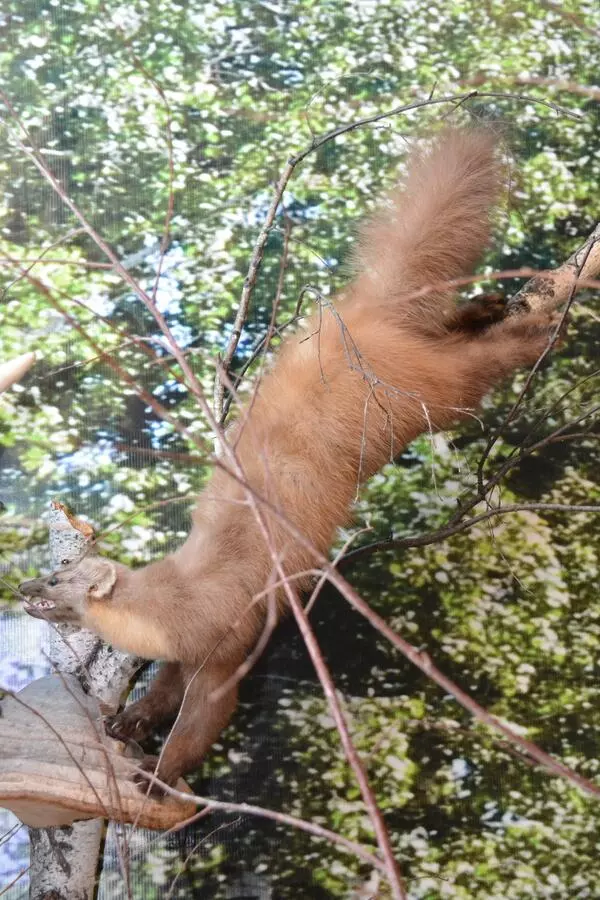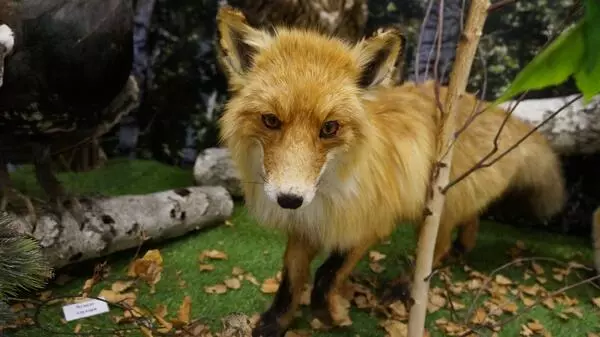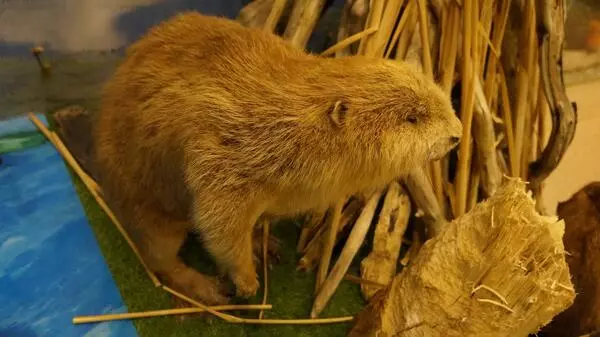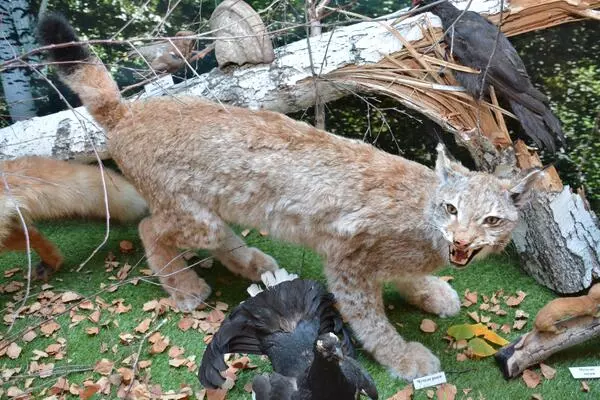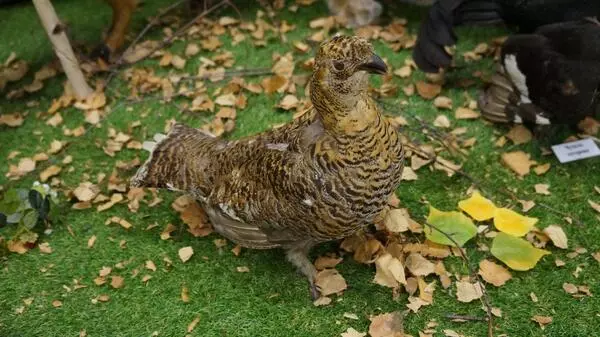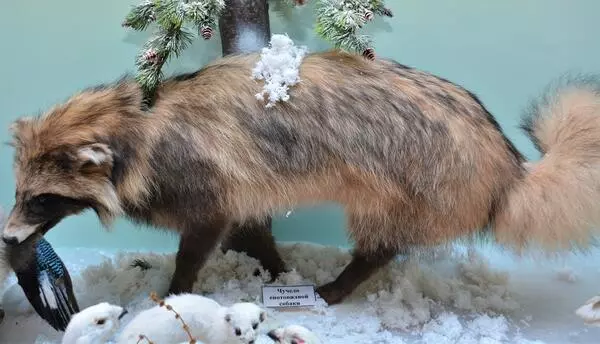The black grouse is a rather large bird in the Phasianidae /fəˈsanəˌdē/ family. The bird has a small head and a short bill. Males appear much larger than females. Their body measures 49 to 58 cm and weighs 1 to 1.4 kg. Females stand 40 to 45 cm and weigh 0.7 to 1 kg.
The cock is easy to tell by its glossy black plumage with a purple or green hue on the head, neck, and lower back and by its crimson red eyebrows. The black grouse’s edge quills are curved significantly towards the sides, which makes its tale resemble a lyre. The hen’s plumage is reddish brown with horizontal gray, dark yellow, and brownish black stripes.
Hens and cocks have different voices. Hens make swift clucking ‘buck-buck-buck’ sounds that they often make long at the end, while cocks make vibrant and long grunting sounds or make a dull call ‘chuuuw-ish’ if alarmed. The bird is mostly silent in the middle of the summer molting and winter.
In early spring, cocks gather together to lek. They are very agitated, they bubble, cream, chase each other, and fight. Hens come to the lekking sites to find partners. After mating, cocks take no part in either making a nest, or brooding, or taking care of the offspring.
The black grouse is a ground bird but it feels fine in trees. Outside the breeding season, especially in winter colds, black grouses gather in flocks. At day, they prefer sitting in the trees and hide under the snow at night. When dawn comes, birds dive in piles of snow from the tree and make a tunnel up to 50 centimeters deep with their body and bill. When it is colder than –20 °C, black grouses can spend up to 24 hours under the snow, coming out only to feed. The bird has a good sense of hearing, so it can left the tunnel right in time. The only danger is the ice crust forming after a short thaw because the black grouse struggles to break it.
When grounded, the bird moves like a chicken—it runs fast and takes wing almost vertically. The black grouse’s flight is swift and energetic. The bird an cover up to a few dozen kilometers without landing. Apart from a perfect sense of sense, the black grouse has good eyesight. In case of danger, it momentarily takes wing and heads away.
The cock is easy to tell by its glossy black plumage with a purple or green hue on the head, neck, and lower back and by its crimson red eyebrows. The black grouse’s edge quills are curved significantly towards the sides, which makes its tale resemble a lyre. The hen’s plumage is reddish brown with horizontal gray, dark yellow, and brownish black stripes.
Hens and cocks have different voices. Hens make swift clucking ‘buck-buck-buck’ sounds that they often make long at the end, while cocks make vibrant and long grunting sounds or make a dull call ‘chuuuw-ish’ if alarmed. The bird is mostly silent in the middle of the summer molting and winter.
In early spring, cocks gather together to lek. They are very agitated, they bubble, cream, chase each other, and fight. Hens come to the lekking sites to find partners. After mating, cocks take no part in either making a nest, or brooding, or taking care of the offspring.
The black grouse is a ground bird but it feels fine in trees. Outside the breeding season, especially in winter colds, black grouses gather in flocks. At day, they prefer sitting in the trees and hide under the snow at night. When dawn comes, birds dive in piles of snow from the tree and make a tunnel up to 50 centimeters deep with their body and bill. When it is colder than –20 °C, black grouses can spend up to 24 hours under the snow, coming out only to feed. The bird has a good sense of hearing, so it can left the tunnel right in time. The only danger is the ice crust forming after a short thaw because the black grouse struggles to break it.
When grounded, the bird moves like a chicken—it runs fast and takes wing almost vertically. The black grouse’s flight is swift and energetic. The bird an cover up to a few dozen kilometers without landing. Apart from a perfect sense of sense, the black grouse has good eyesight. In case of danger, it momentarily takes wing and heads away.


